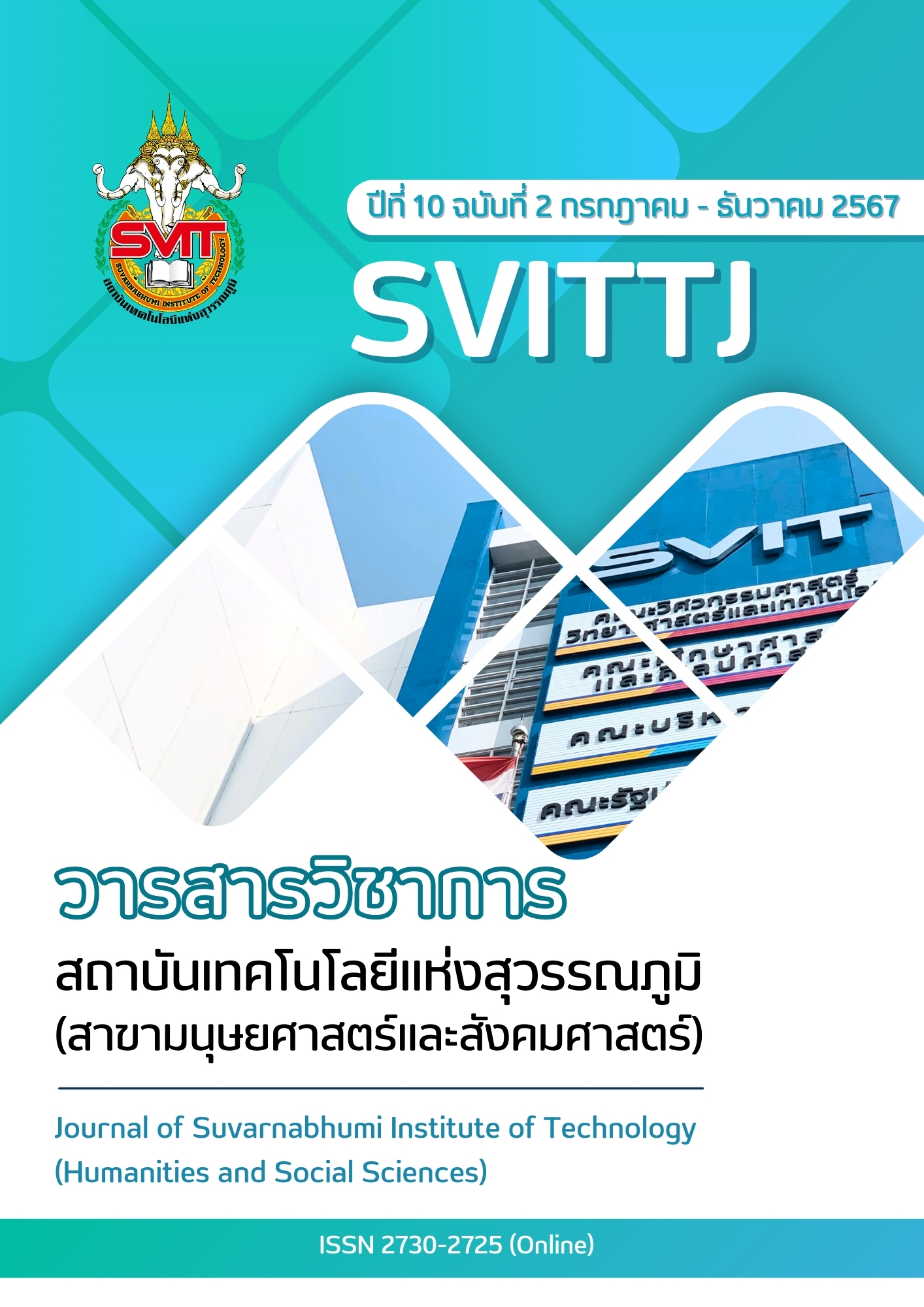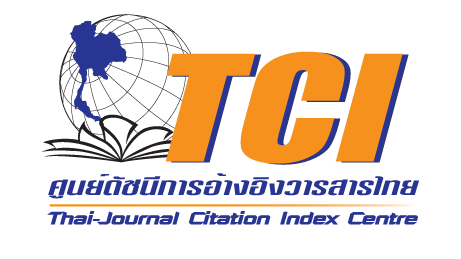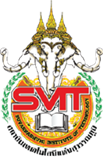THE ROLE OF MODHUM AS BAN DONG DANG COMMUNITY IDENTITY, DONG DANG SUB-DISTRICT, JATURAPHAKPHIMAN DISTRICT, ROI ET PROVINCE
Keywords:
Modhum, Modhum Identity, Modhum Isan CultureAbstract
The objective of this article is to study the role of Modhum as the community identity by using qualitative research design. The key informant consisted of 25 persons. The area studied was Ban Dong Dang, Dong Dang sub-district, Jaturaphakphiman district, Roi Et province. The sample was selected by purposive and snowball sampling methods. An in-depth interview through structured questionnaires was used for data collection. Data were analyzed using content analysis and triangulation was used to test the validity of the data obtained.
The research result revealed that the cultural identity of Ban Dong Dang Community, Dong Dang sub-district, Jaturaphakphiman district, Roi Et province was influenced by Modhum culture based on living a community lifestyle from the past to the present. Modhum culture is the medium for maintaining and passing on community culture and wisdom. Modhum culture was combined with Buddhism, creating belief and faith among people in the community through ritual practitioners known as “Modhum”. Modhum culture is the center of the mind, the anchor of people who suffer physically and mentally, and the culture of rituals. According to the study on the identity in terms of lifestyle and the wisdom of Modhum culture, current Modhum culture could be analyzed in 10 roles as follows: 1. The role of leadership in behaving and conducting oneself. 2. The role in unity. 3. The role in creating and uplifting community culture. 4. The role in giving knowledge, wisdom, and information. 5. The role of being a local wisdom and cultural learning center. 6. The role in teaching. 7. The role of being the spiritual anchor. 8. The role in conserving and reflecting local identity. 9. The role in carrying on community traditions, and 10. The role in linking the belief in herbal medicine and the belief in modern medicine.
References
จิรายุ ทรัพย์สิน, วันชัย สุขตาม, อธิมาตร เพิ่มพูน และ พิศาล พระงาม. (2561). หมอธรรม : การผสมกลมกลืนทางวัฒนธรรม บนพื้นฐานความเชื่อ ประเพณี วัฒนธรรม.(รายงานวิจัยฉบับสมบูรณ์., มหาวิทยาลัยราชภัฏสุรินทร์)
ไทยบีพีเอส. (2566). มูเตลู ธุรกิจดาวเด่น รายได้รวมปี 64 เพิ่มขึ้นกว่า 113%. สืบค้นจาก https://www.thaipbs.or.th/news/content/325080.
บูรณ์เชน สุดคุ้ม. (2564). ประวัติศาสตร์เรื่องเล่า ตำนาน คุณค่า บทบาทหน้าที่และอัตลักษณ์ของกลุ่มชาติพันธุ์บ้านกู่ ตำบลกู่ อำเภอปรางกู่ จังหวักศรีสะเกษ . วารสารสหวิทยาการมนุษยศาสตร์และสังคมสงเคราะห์, 4(3), 1067-1080. สืบค้นจาก https://so04.tcithaijo.org/index.php/jmhs1_s/article/download/253630/172802/924031.
บุญศรี เลิศวิริยจิตต์. (2554). คลังภูมิปัญญาหมอพื้นบ้านกับสมุนไพรชุมชนภาคอีสาน. (รายงานวิจัยฉบับสมบูรณ์, มหาวิทยาลัยราชภัฏสวนสุุนันทา)
ปฐมพงศ์ ลิ้มเจริญ. (2558). หมอธรรม: ประวัติศาสตร์ความเชื่อและเครือข่ายทางสังคมในภาคอีสาน. วารสารช่อพะยอม, มหาวิทยาลัยราชภัฎมหาสารคาม, 27(1), 25-34.
ปิยนุช ยอมสมสวย และ สุพิมพ์ วงษ์ทองแท้ (2552), การศึกษาภูมิปัญญาหมอพื้นบ้านในอำเภอองครักษ์ จังหวัดนครนายก. (โครงการวิจัย, คณะสหเวชศาสตร์, มหาวิทยาลัยศรีนครินวิโรฒ)
พจนานุกรม ฉบับราชบัณฑิตยสถาน. (2555). ระบบค้นหาทั่วไป, ออนไลน์. สืบค้นจาก. https://dictionary.orst.go.th.
พรรณิดา ขันธพัทธ์ และ นันท์ชญา มหาขันธ์. (2558). การปรับเปลี่ยนวิถีทางประเพณีพิธีกรรมความเชื่อและอัตลักษณ์ของชาวไทใหญ่ในจังหวัดเชียงใหม่. วารสารวิชาการมนุษยศาสตร์และสังคมศาสตร์ มหาวิทยาลัยบูรพา, 23(41), 179-199.
พระมหาปรีชา เขมนนโท, อนุวัติ กระสังข์. (2560). ย้อนรอยความเชื่อ: พิธีล้างหน้าพระพักตร์พระพุทธรูปสู่ความยั่งยืนพุทธศาสนา. วารสาร มจร มนุษยศาสตร์ปริทรรศน์, 8(1), 101-110.
พุทธินันทน์ บุญเรือง .(2560). การเปลี่ยนแปลงทางสังคม วัฒนธรรม เศรษฐกิจของชุมชนชายแดนต่อการเข้าสู่ประชาคมเศรษฐกิจอาเซียน (AEC): การเกิดขึ้นของจุดผ่านแดนถาวรช่องภูดู่และการตอบสนองของคนท้องถิ่นในอำเภอบ้านโคก จังหวัดอุตรดิตถ์. วารสารวิชาการแพรวากาฬสินธุ์ มหาวิทยาลัยกาฬสินธุ์, 4(1), 1-21.
ศิริวรรณ สิทธิกา. (2566). จักรวาลสายมู การตลาดที่ขับเคลื่อนด้วยความเชื่อ กับวัตถุที่ถูกทำให้ศักดิ์สิทธิ์. สืบค้นจาก. https://plus.thairath.co.th/topic/spark/103603.
ศิราพร ณ ถลาง. (2563). ทฤษฏีคติชนวิทยา วิธีวิทยาในการวิเคราะห์ตำนาน-นิทานพื้นบ้าน. (พิมพ์ครั้งที่ 4) กรุงเทพฯ: จุฬาลงกรณ์มหาวิทยาลัย.
สุเมษย์ หนกหลัง. (2558). กิจกรรมเสมือนชุมชนเพื่อการเรียนรู้บทบาทหน้าที่ในชุมชน: การบูรณาการแนวคิด สู่การปฏิบัติ. Journal of Research and Curriculum Development, 5(2), 1-13. สืบค้นจาก.https://so03.tci-thaijo.org/index.php/jrcd/article/view/93182
สารานุกรมวัฒนธรรมไทยภาคอีสาน. (2542). พญาคันคาก – ไพหญ้า: เล่ม 9. กรุงเทพฯ: มูลนิธิสารานุกรมวัฒนธรรมไทย ธนาคารไทยพาณิชย์.
สำนักงานกองทุนสนับสนุนการสร้างเสริมสุขภาพ. (2566). แพทย์พื้นบ้านสร้างสุขชุมชน. สืบค้นจาก https://www.thaihealth.or.th/แพทย์พื้นบ้านสร้างสุขช/.
อภิญญา เฟื่องฟูสกุล. (2546). อัตลักษณ์ Identity การทบทวนทฤษฎีและกรอบแนวคิด. กรุงเทพฯ: คณะกรรมการสภาวิจัยแห่งชาติ สาขาสังคมวิทยา สำนักงานคณะกรรมการวิจัยแห่งชาติ.
อินทิรา พงษ์นาค. (2558). อัตลักษณ์ชุมชนเมืองโบราณอู่ทองจังหวัดสุพรรณบุรี. Veridian E-Journal Slipakorn University, 8(3),513.
เอกวิทย์ ณ ถลาง และคณะ. (2540). ภูมิปัญญาชาวบ้านกับการพัฒนาชุมชน : วิถีกระบวนการการเรียนรู้ชาวบ้านไทย. นนทบุรี โรงพิมพ์มหาวิทยาลัยสุโขทัยธรรมาธิราช.
Allport, G. W. (1961). Pattern and growth in personality. Holt, Reinhart & Winston.
Miles, M. B. & Huberman. (1994). Qualitative Data Analysis. (2nd ed). Thousand Oaks: SAGE. London.
Piyaluk Potiwan. (2020). Social Space Construction of Sprit’s Isan. Journal of Cultural Approach. Siam University, 17(32) 100-110.
Downloads
Published
Issue
Section
License
Copyright (c) 2024 Suvarnabhumi Institute of Technology

This work is licensed under a Creative Commons Attribution-NonCommercial-NoDerivatives 4.0 International License.
บทความที่ได้รับการตีพิมพ์เป็นลิขสิทธิ์ของวารสารวิชาการ สถาบันเทคโนโลยีแห่งสุวรรณภูมิ
ข้อความที่ปรากฏในบทความแต่ละเรื่องในวารสารวิชาการเล่มนี้เป็นความคิดเห็นส่วนตัวของผู้เขียนแต่ละท่านไม่เกี่ยวข้องกับสถาบันเทคโนโลยีแห่งสุวรรณภูมิ และคณาจารย์ท่านอื่นๆในสถาบันฯ แต่อย่างใด ความรับผิดชอบองค์ประกอบทั้งหมดของบทความแต่ละเรื่องเป็นของผู้เขียนแต่ละท่าน หากมีความผิดพลาดใดๆ ผู้เขียนแต่ละท่านจะรับผิดชอบบทความของตนเองแต่ผู้เดียว





